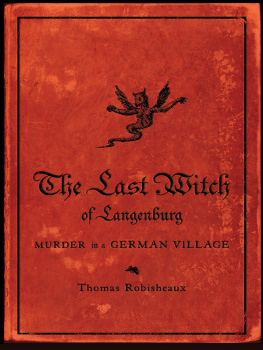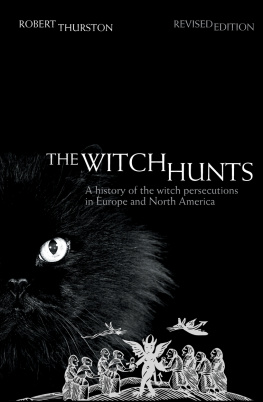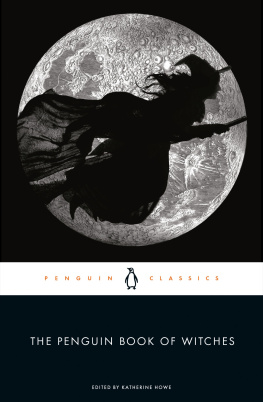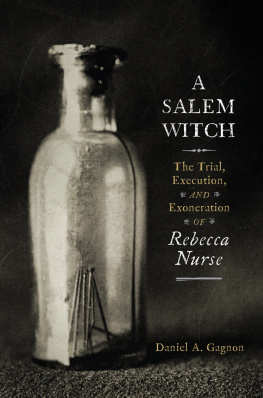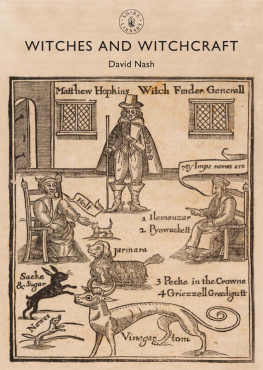
THE LAST WITCH
OF LANGENBURG

Murder in a German Village

Thomas Robisheaux

Some images in this e-book are not displayed owing to permissions issues.
Copyright 2009 by Thomas Robisheaux
All rights reserved
First Edition
Frontispiece: Illustration from Martin Ziller and Mathaeus Merian, Topographia Germaniae, Vol. 8, Franken (Frankfurt A.M., 1656). W. B. Yeatss Lines Written in Dejection is quoted with permission of A P Watt Ltd. on behalf of Grinne Yeats.
For information about permission to reproduce selections from this book, write to Permissions, W. W. Norton & Company, Inc., 500 Fifth Avenue, New York, NY 10110
For information about special discounts for bulk purchases, please contact W. W. Norton Special Sales at specialsales@wwnorton.com or 800-233-4830
Book design by JAM Design
Production manager: Anna Oler
The Library of Congress has cataloged the printed edition as follows:
Robisheaux, Thomas Willard.
The last witch of Langenburg: murder in a German village / Thomas Robisheaux. 1st ed.
p. cm.
Includes bibliographical references and index.
ISBN 978-0-393-34968-9 (hardcover)
1. WitchcraftGermanyLangenburgHistory. 2. MurderGermanyLangenburg History. I. Title. BF1583.R63 2009 133.10943471dc22 2008043052
ISBN 978-0-393-24773-2 (e-book)
W. W. Norton & Company, Inc.
500 Fifth Avenue, New York, N.Y. 10110
www.wwnorton.com
W. W. Norton & Company Ltd.
Castle House, 75/76 Wells Street, London W1T 3QT
For La Pierre Anglique, my Luxembourgish rose


H ow much can we ever know about the love and pain in anothers heart? How much can we hope to understand those who have suffered deeper anguish, greater deprivation, and more crushing disappointments than we ourselves have known? Even if the worlds rich and powerful were to put themselves in the shoes of the rest, how much would they really understand the wretched millions suffering around them?
O RHAN P AMUK ,
Snow
W hen have I last looked on
The round green eyes and the long wavering bodies
Of the dark leopards of the moon?
All the wild witches, those most noble ladies,
For all their broom-sticks and their tears,
Their angry tears, are gone.
The holy centaurs of the hills are vanished .
W. B. Y EATS ,
Lines Written in Dejection
T hese days
the names of the dead
cast long shadows across our memories,
and the silence
of a lonely God
can be heard in the whispering of the wind.
G OTTLOB H AAG ,
Liegt ein Dorf in Hohenlohe
Contents
CHAPTER XIV Impasse
I first heard about the witch of Hrden in the summer of 1994. On a trip through the Hohenlohe region of Germany, my wife and I stopped at an old mill in that village, near the town of Langenburg. While we were looking at the building, a voice called out from across the street: A witch used to live there! After the current owner of the mill told us about the millers wife who once lived there, she urged us to talk with the pastors widow, who could tell us more. Later that afternoon, walking through a little gate and into her blooming cottage garden, Frau Ingaruth Schlauch of Bchlingen welcomed us to the parsonage, and, over cake and local cookies called Wibele, told us about how she had discovered the witchs story in the old parish register. She had been so taken by the account that she had written a play based on it. Urging me to read the account for myself, she then told us about other stories inspired by the witch of Hrden. Later that afternoon, as I looked out from the town walls of Langenburg toward Hrden, I wondered about the millers wife whose life inspired stories three centuries after her death.
When I first read the records of her trial in 1672 for poisoning and witchcraftin the castle archives in NeuensteinI could scarcely believe the story. Those documents gave the millers wife a nameAnna Elisabeth Schmiegand an astonishingly detailed glimpse into the life of an ordinary woman that became the pivot of the last witch trials in the region. Anna Schmieg? Who was she? How had this everyday woman fashioned her life in such difficult times? Why was she suspected of witchcraft?
The story of the Langenburg witchesten people accused of witchcraft between 1668 and 1672had never been told before, let alone that of Schmiegs own trial. Knowing the records of the witch trials and the historical literature about witchcraft, I recognized that those on her and her trial were more vivid and voluminous than any I knew. When I then discovered that her daughter, Eva, husband, Hans, and son, Michel, had also been tried on suspicion of witchcraft and that their dossiers were as detailed as hers, I realized that Annas story opened up a view onto a village world far richer and more complex than I had ever expected to discover. Here the personal and communal relationships that bred suspicions of witchcraft could be explored in a way rarely possible.
At first I envisioned a short book about Anna Schmieg, her family and village, and her trial. When I then discovered two eminent men of affairs associated with Annas story, I realized that that story reached far beyond her home village and involved a historical drama larger and more complex than I had suspected. The first name piqued my curiosity: Moritz Hofmann, a highly regarded and innovative physician and anatomist. The second stunned me: Johann Wolfgang Textor, a prestigious jurist, an early proponent of natural-law theory, and grandfather of Germanys national poet, Johann Wolfgang von Goethe. Why would such prominent men become involved in a witch trial in Hrden? Answering that question took me to new archives and libraries and added several more years of research.
What seemed at first to have been events on a small village stage revealed themselves as scenes in a Baroque drama, complete with larger-than-life characters, tragic fates, unexpected interventions, family secrets and secret identities, violent passions, and life-shattering revelations. Annas story changed completely. Her fate, I learned, was intimately connected to the world of the universities: fierce debates about evidence and proof, controversies about poisoning and the emerging science of forensic medicine, and arguments over the nature of politics, religion, and the state. Understanding how and why Annas case touched raw nerves about so many issues turned upside down my understandings about witches and ordinary people, learned jurists, physicians, and rulers in early modern society.
At the same time, the way in which I imagined telling Anna Schmiegs tale changed as well. Seeking a fresh perspective, I decided to approach the material through microhistory, a method that explores events on the small scale in which people experience everyday life. While the technique has its limits, it afforded me the opportunity to approach certain problems about witchcraftand the late witch trials in particularthat have proved elusive to understanding. In particular, I wanted to use the narrative potential in microhistory to explore the multiple layers of experience and meaning important to understanding witchcraft.
Next page
